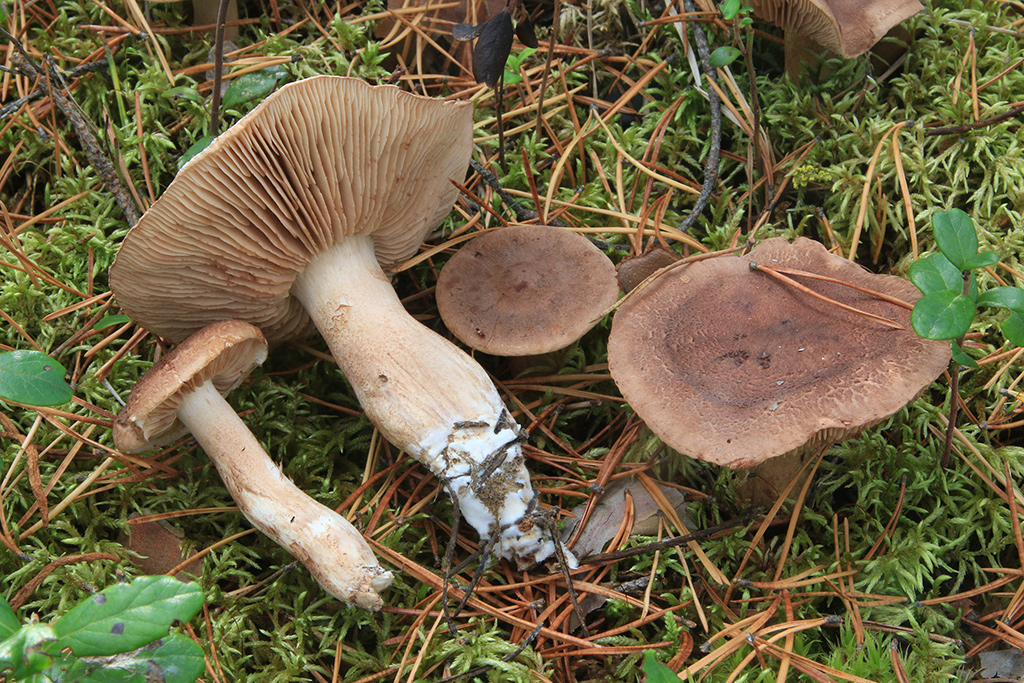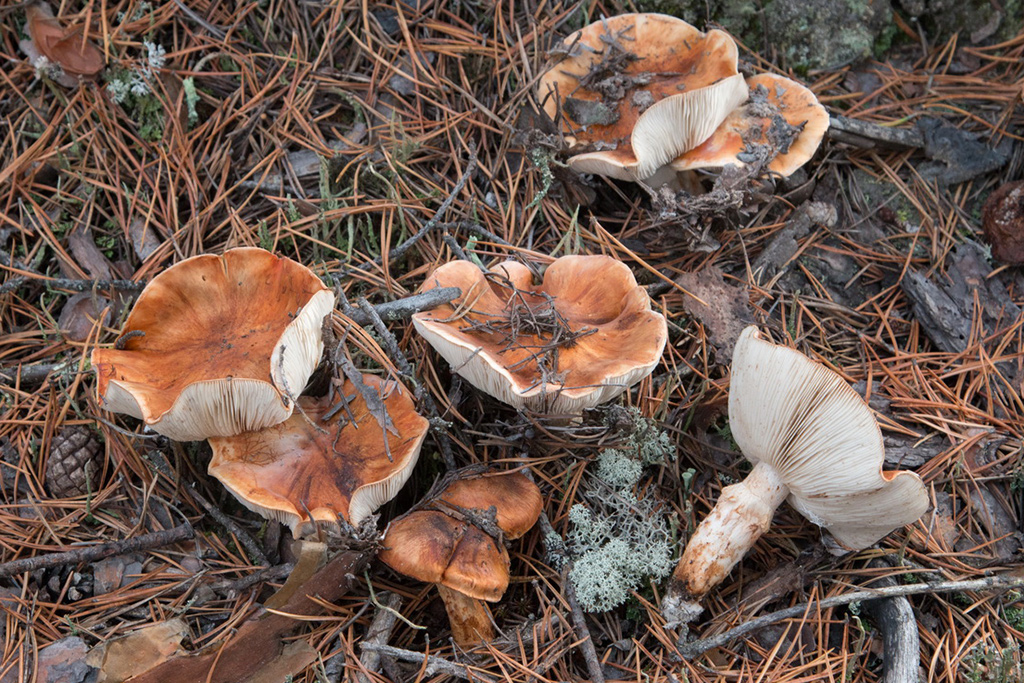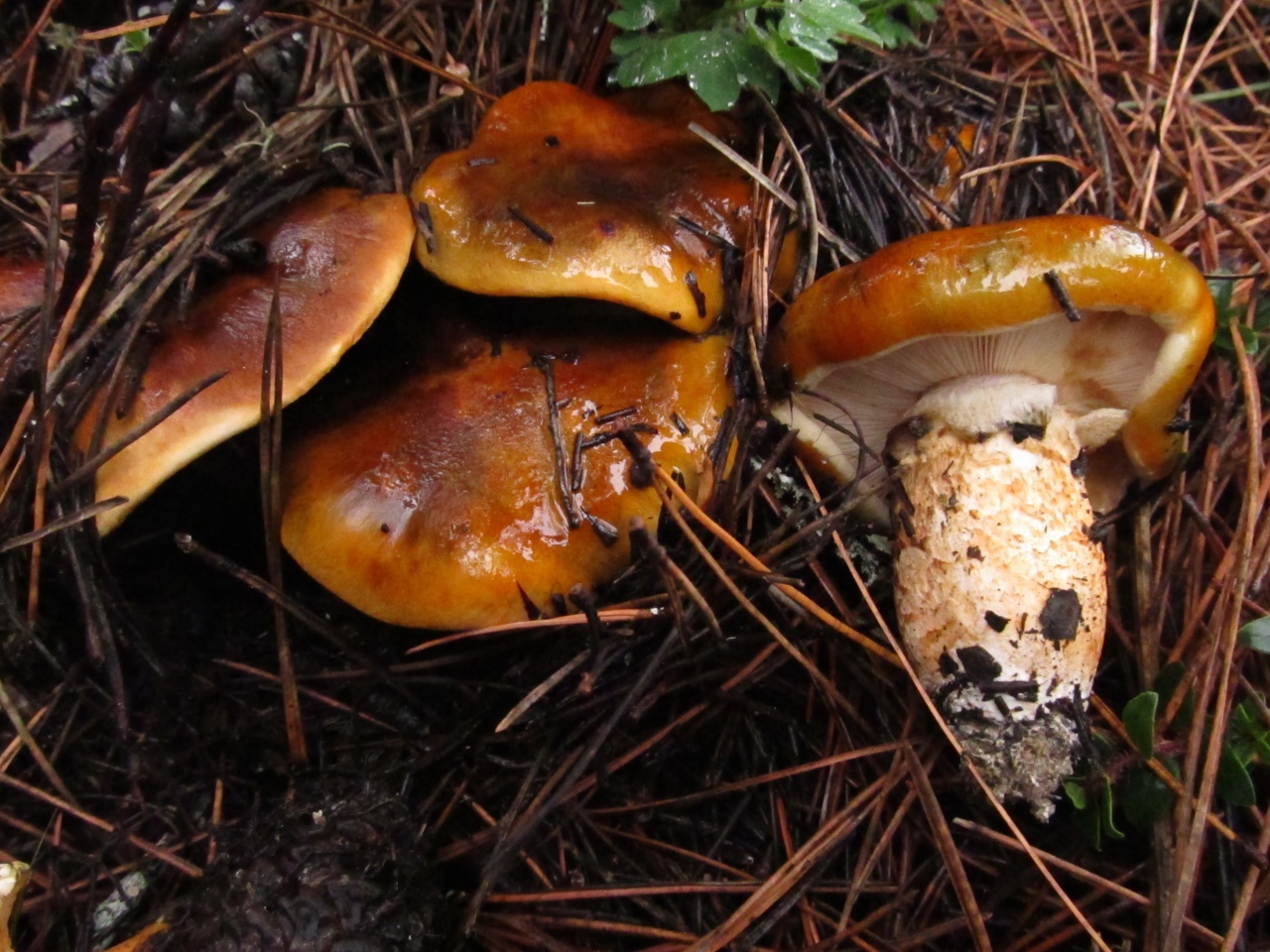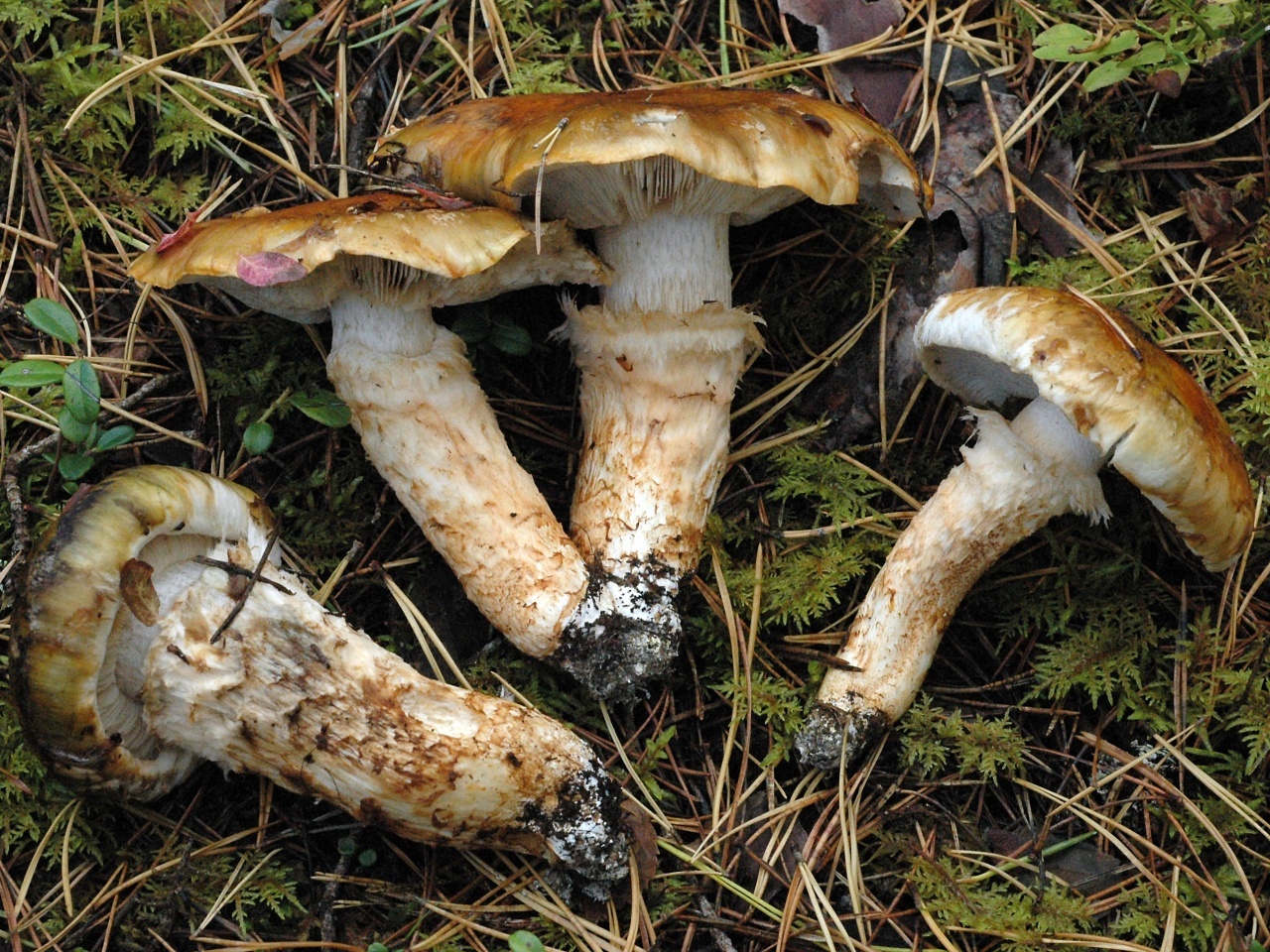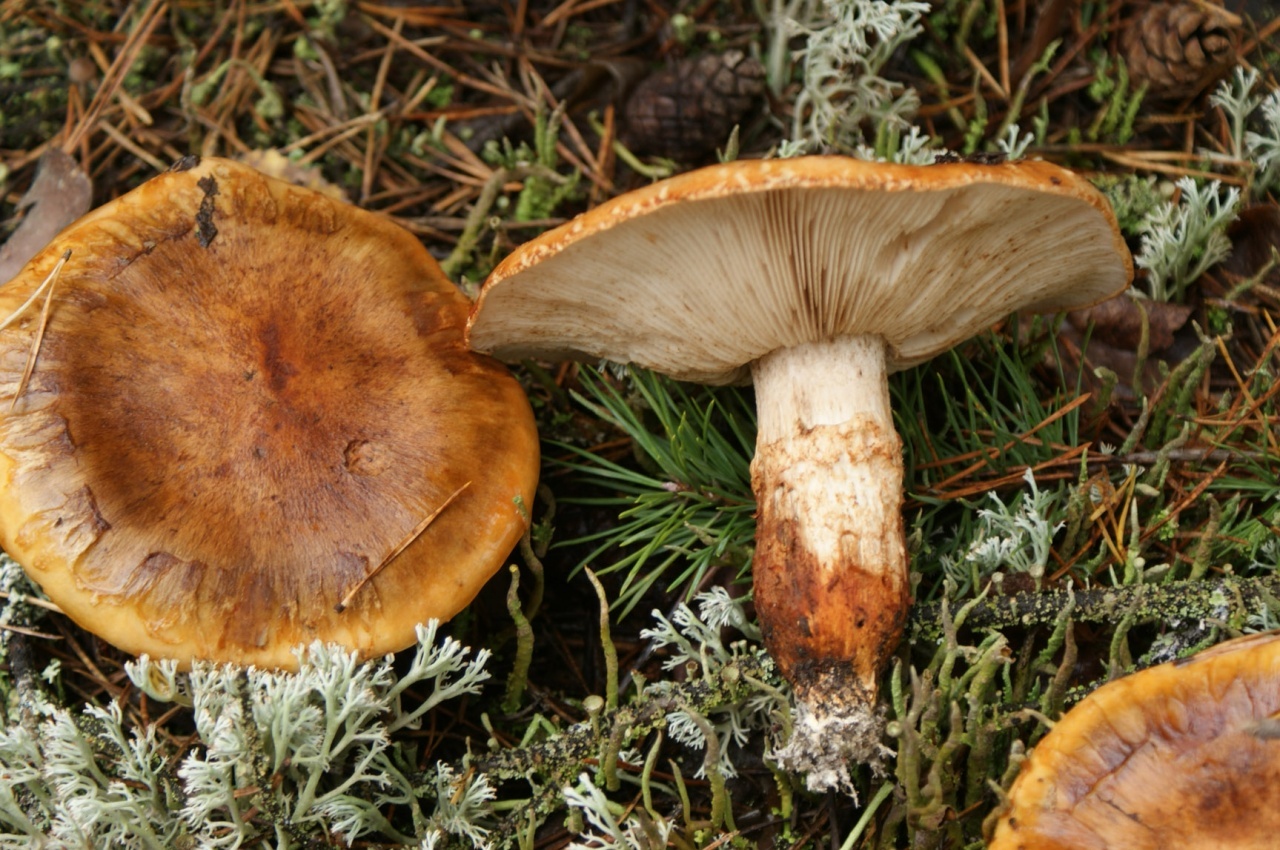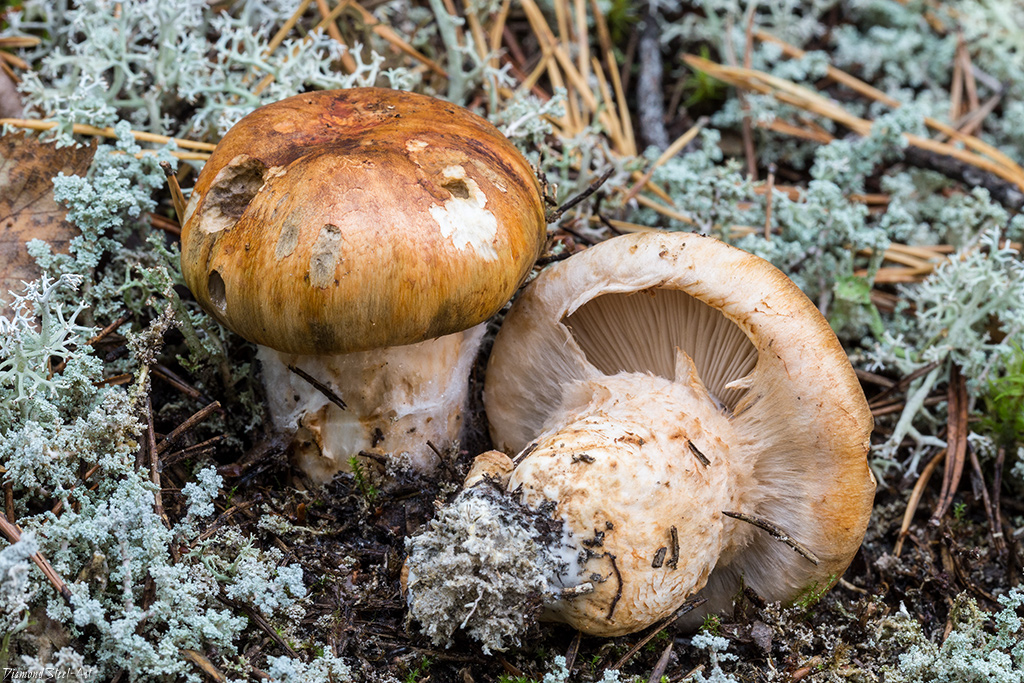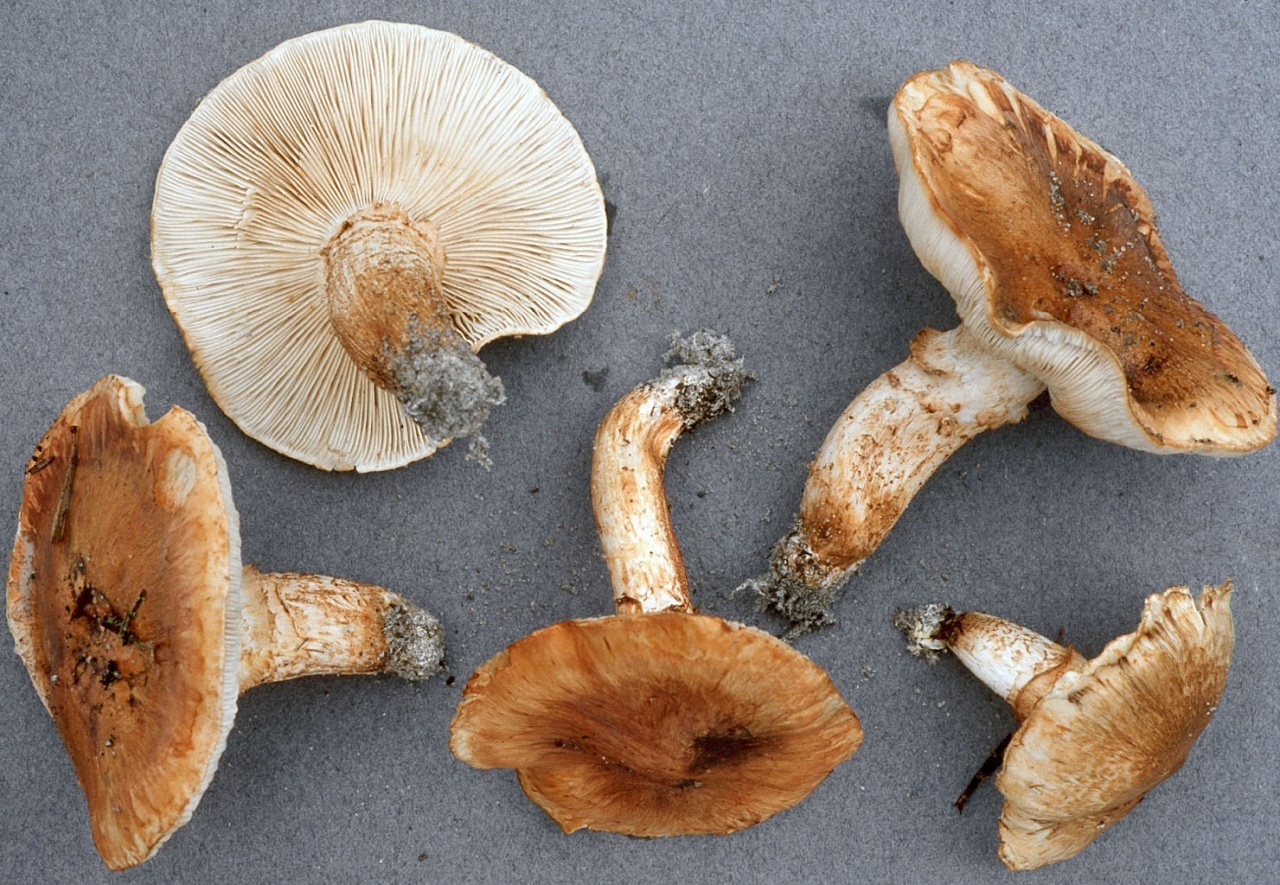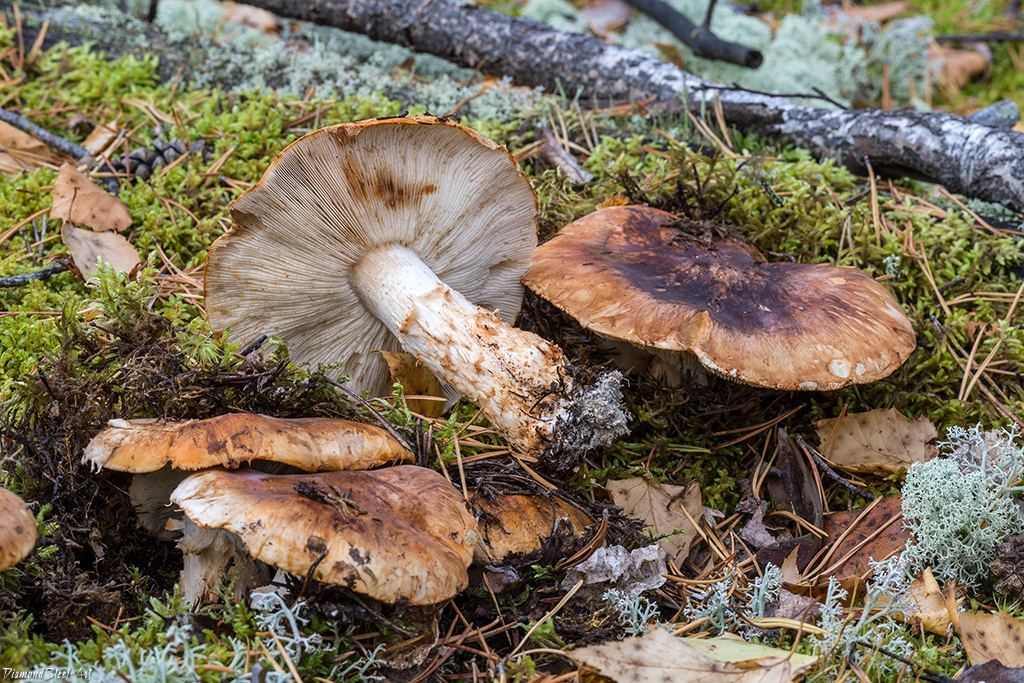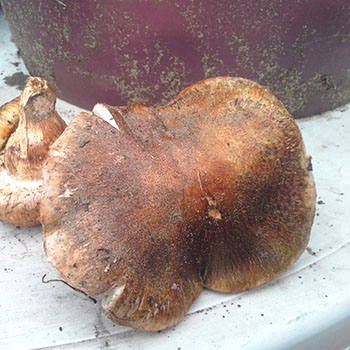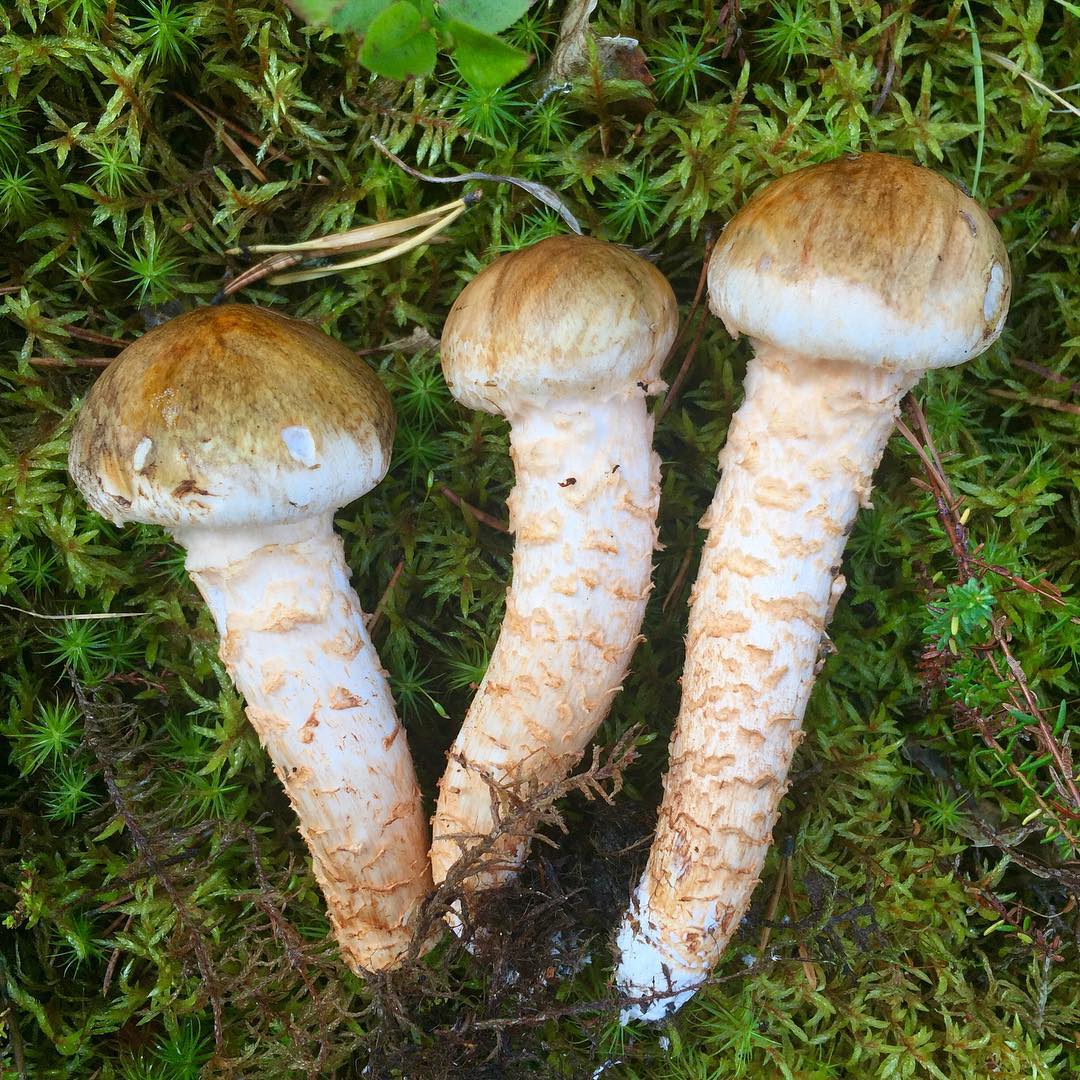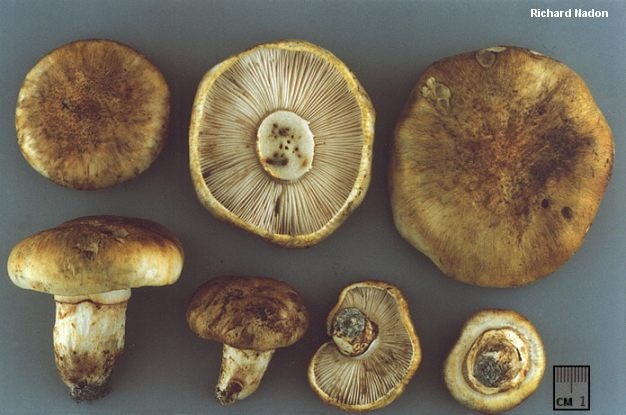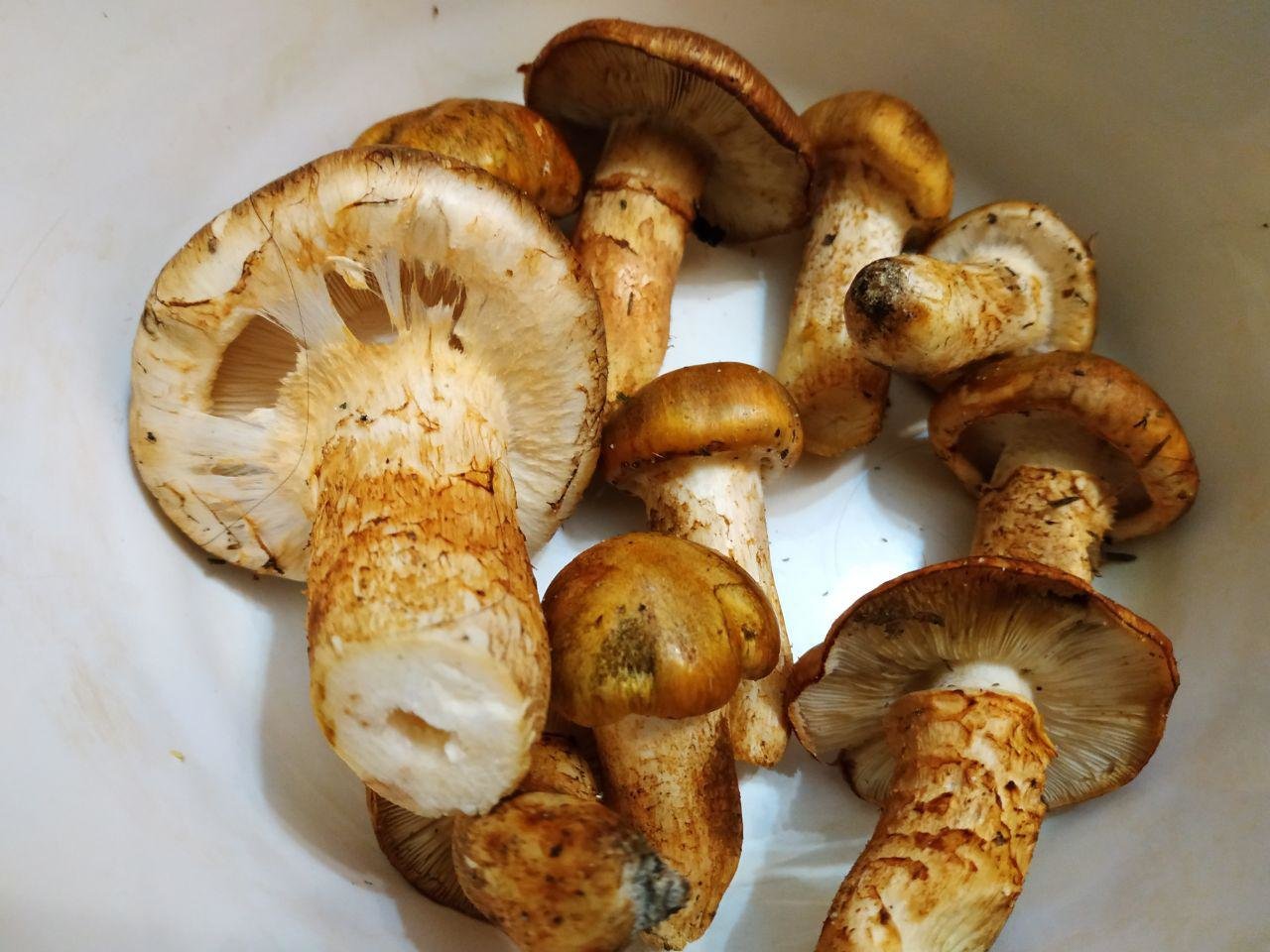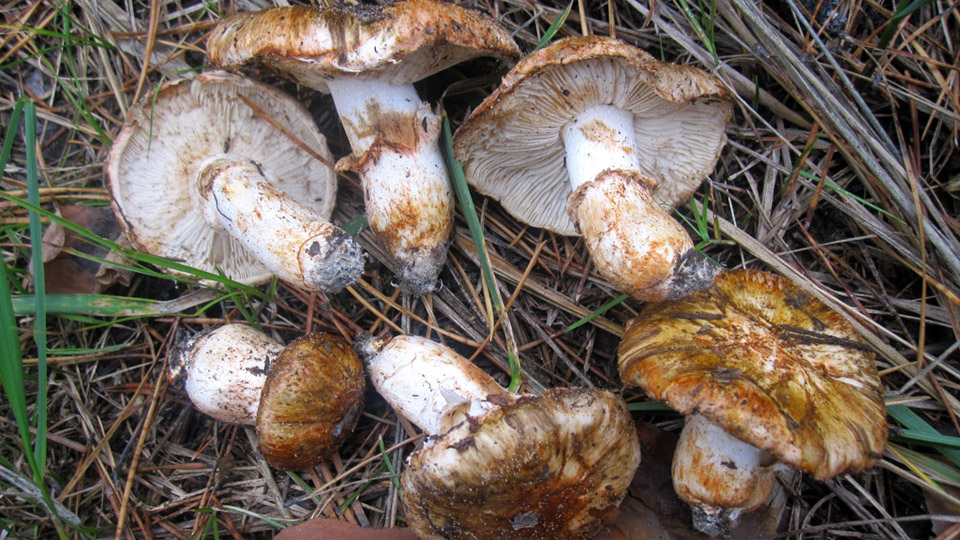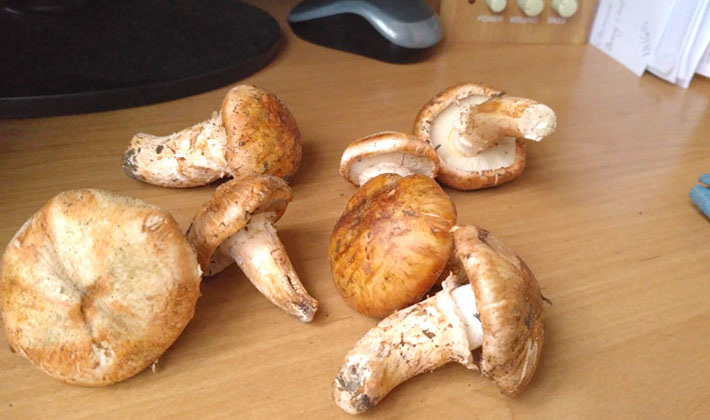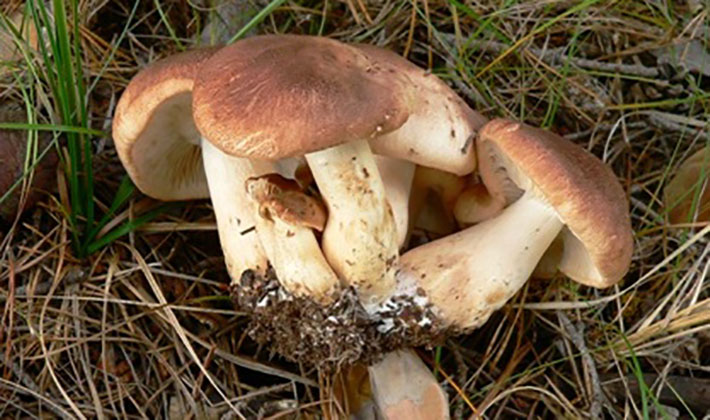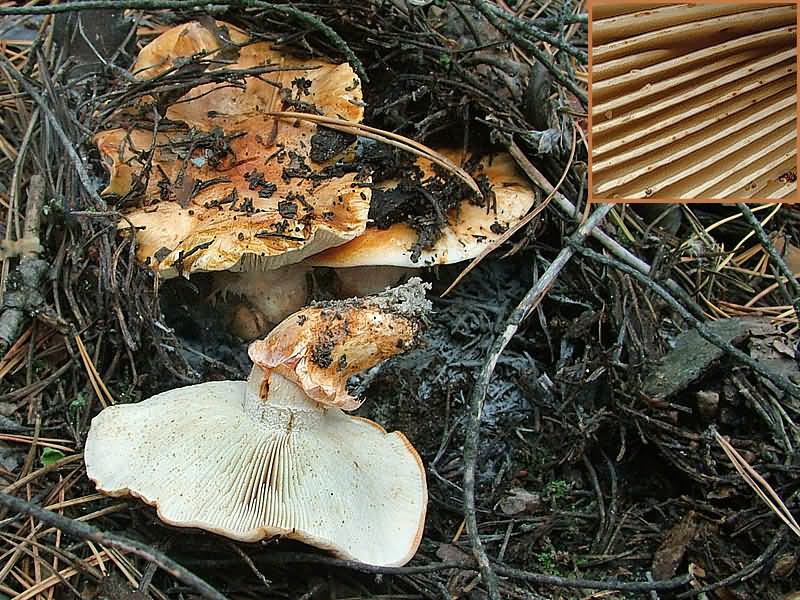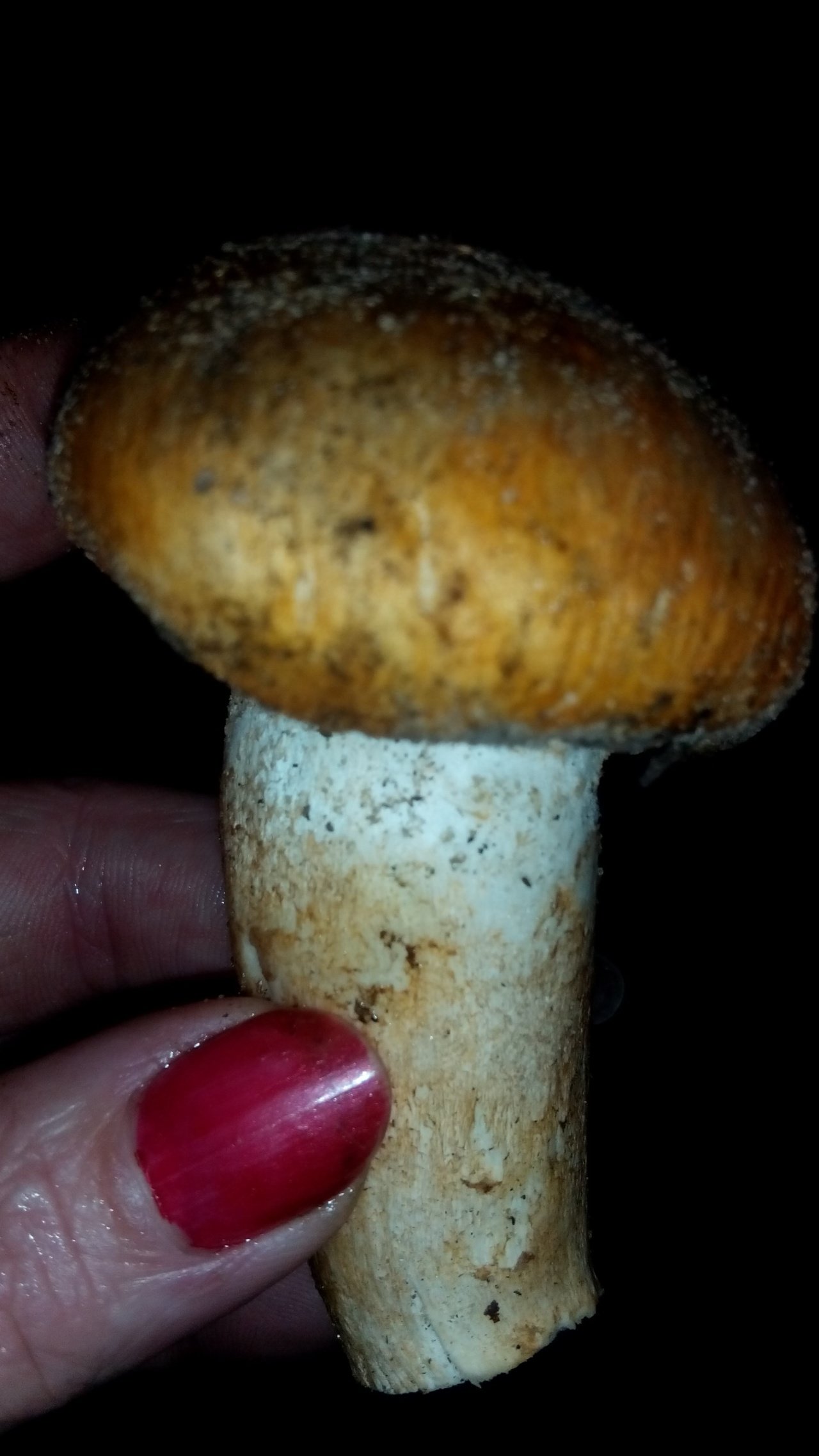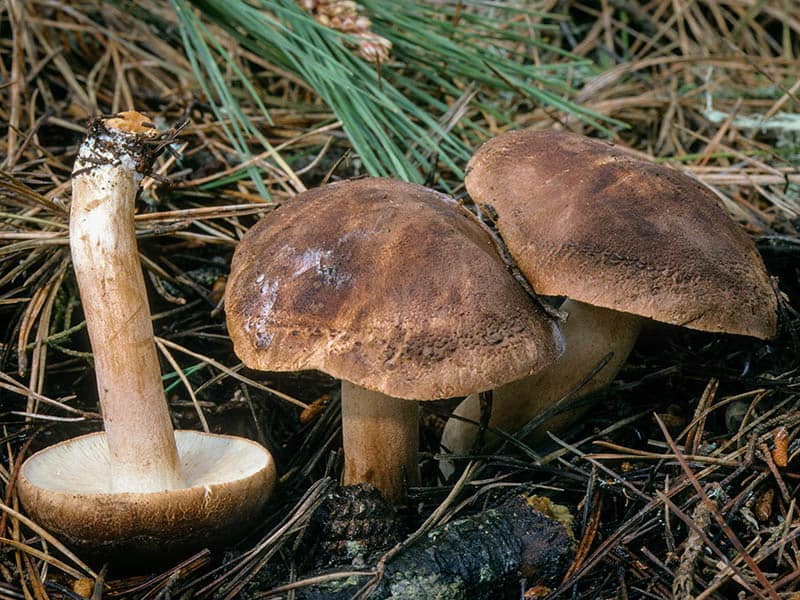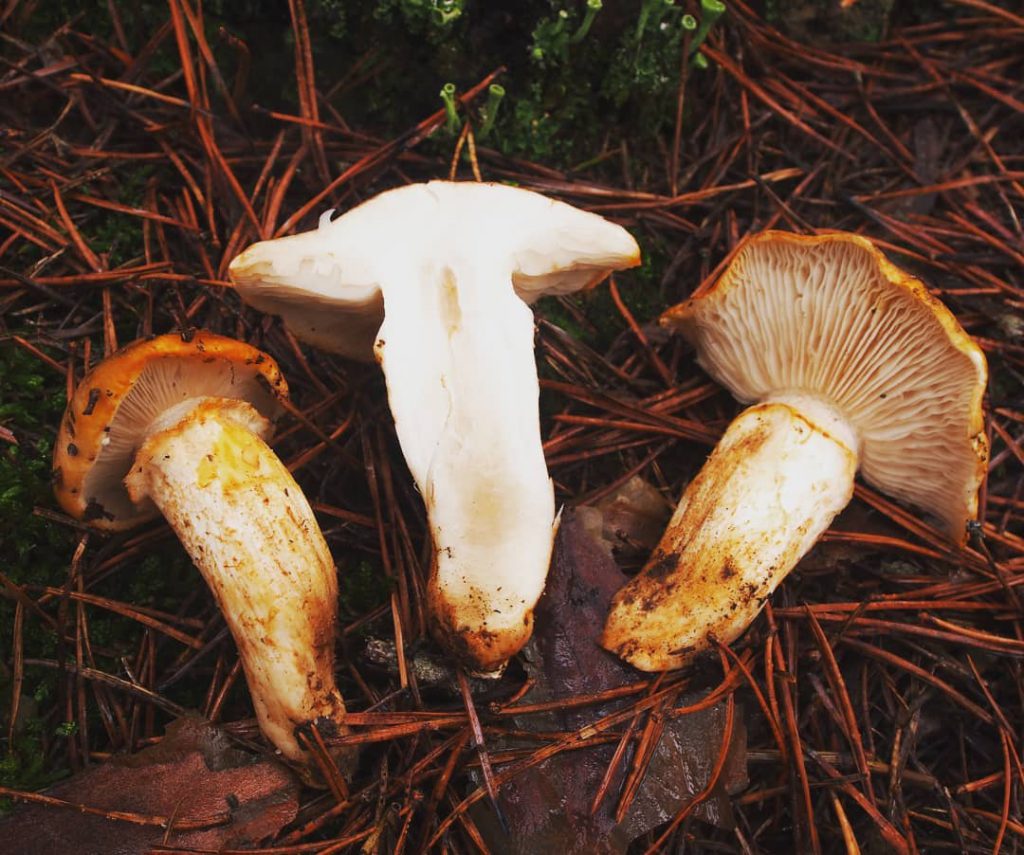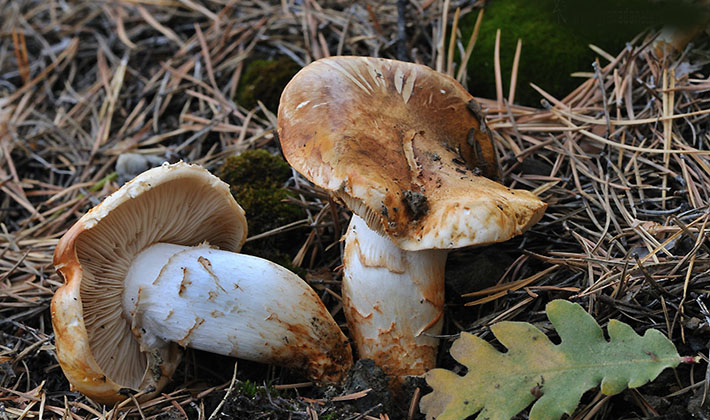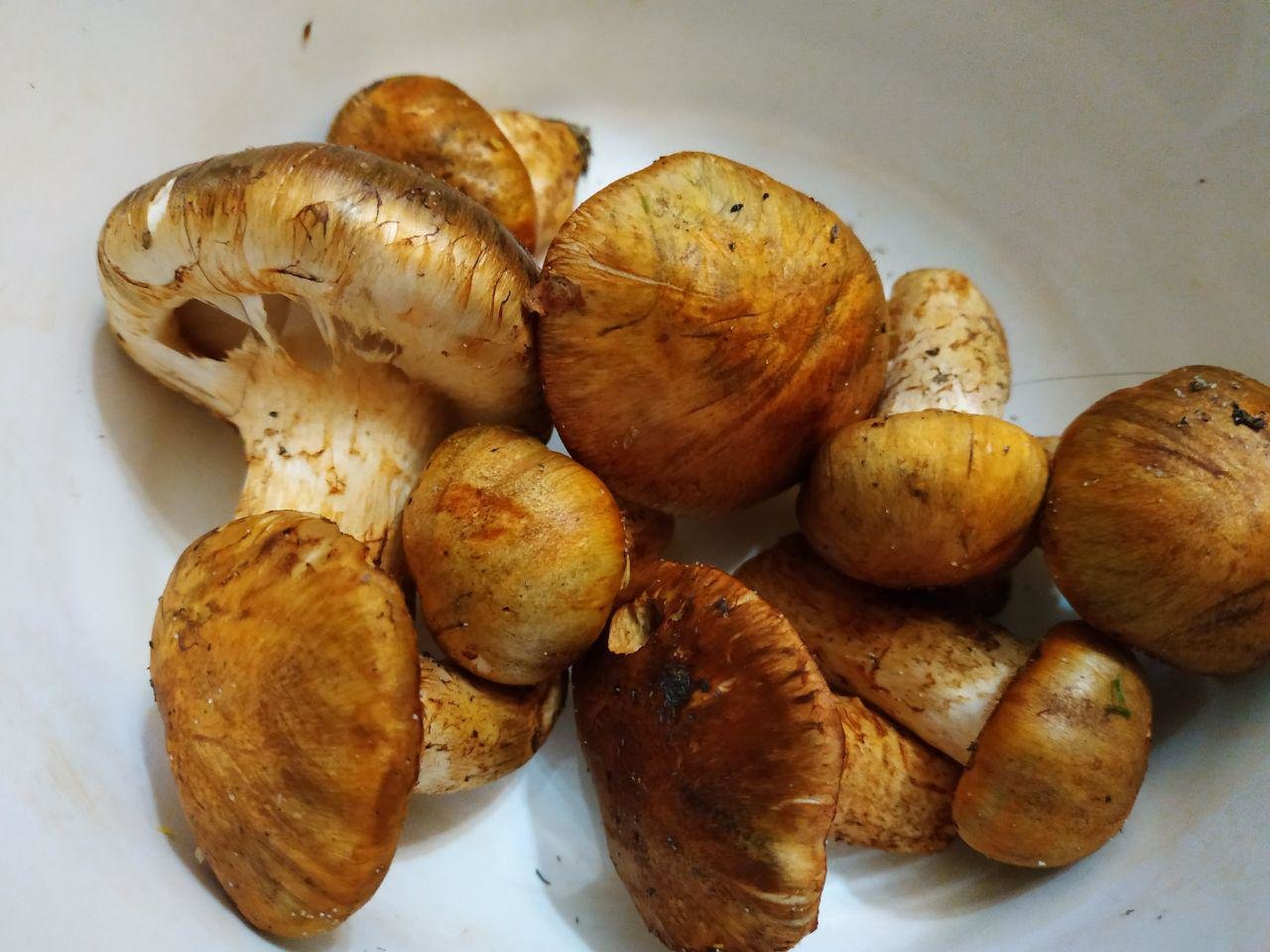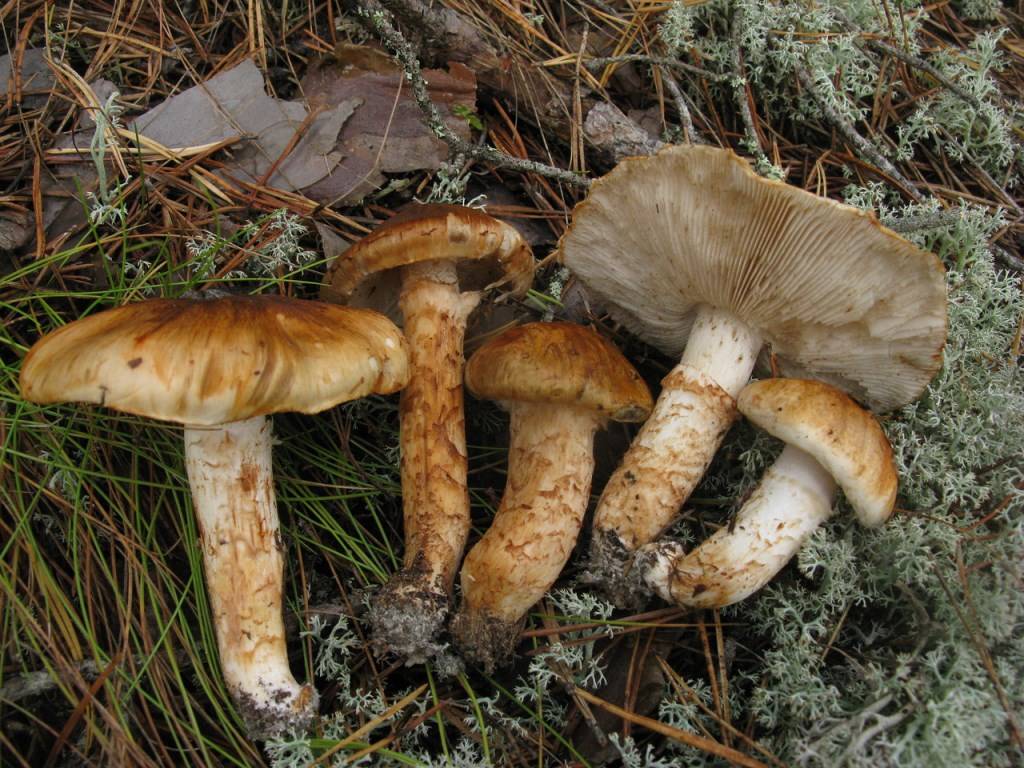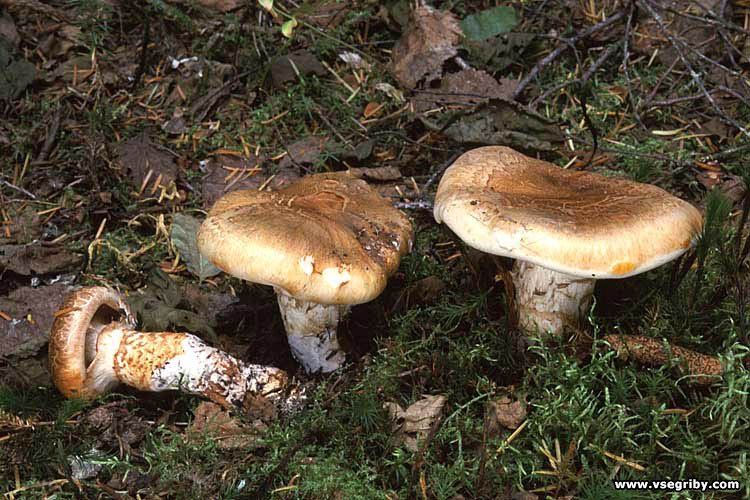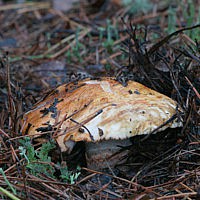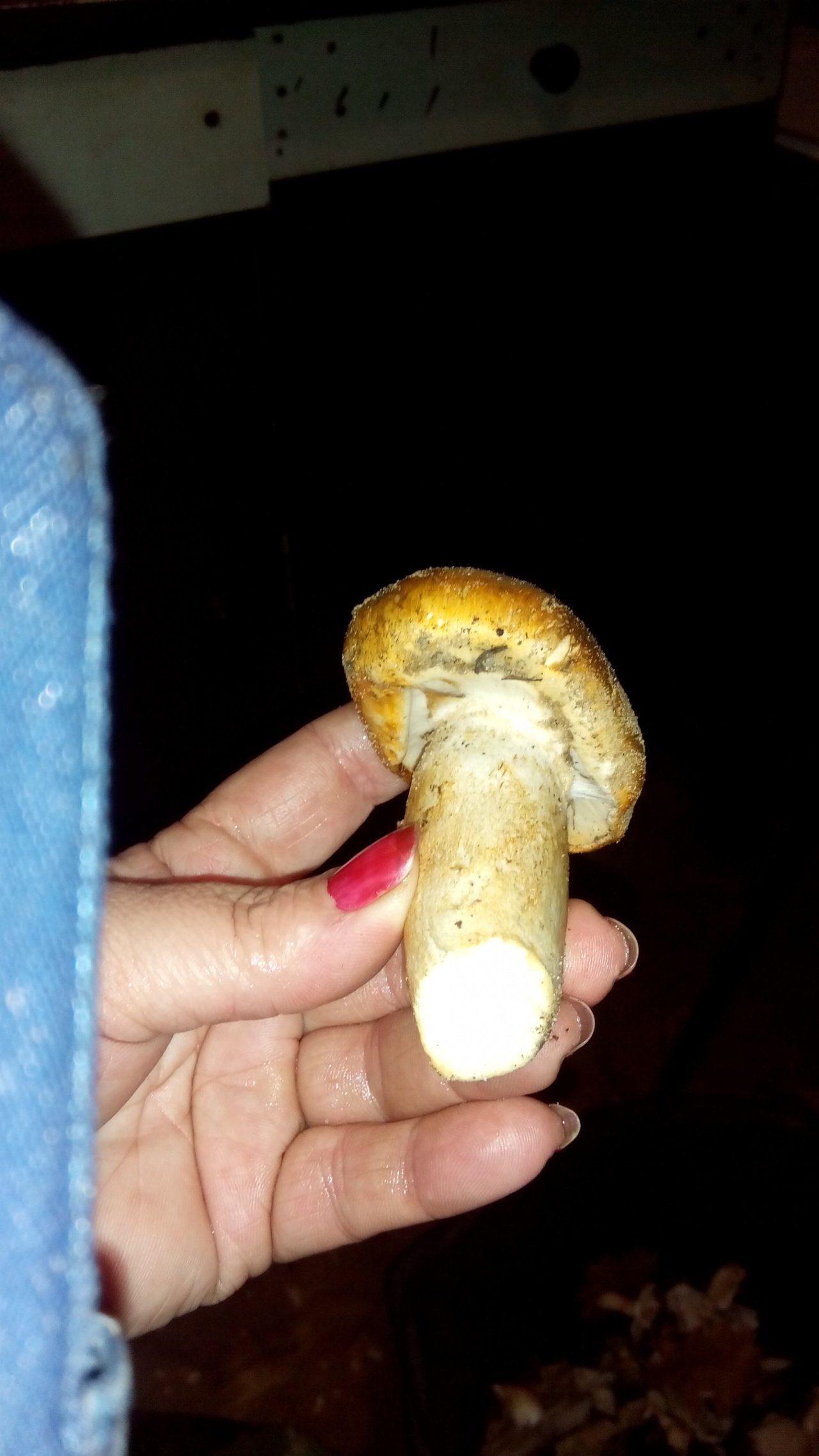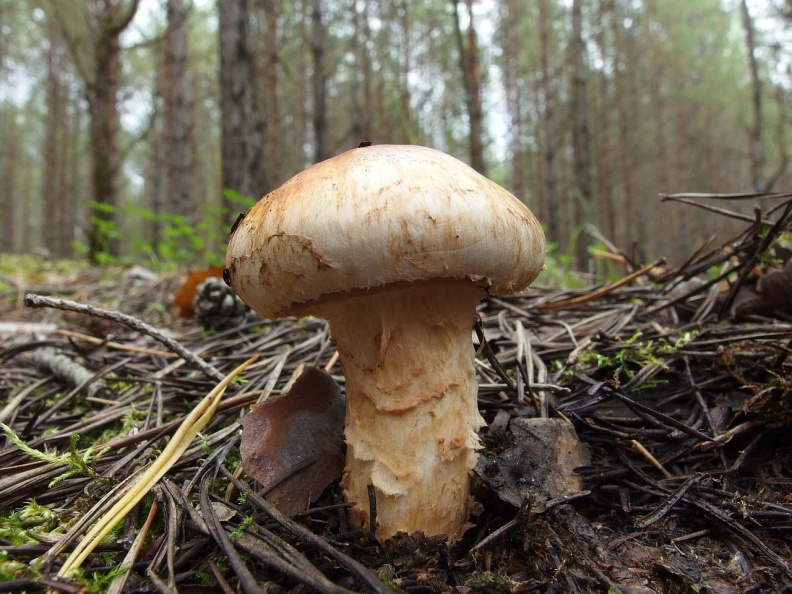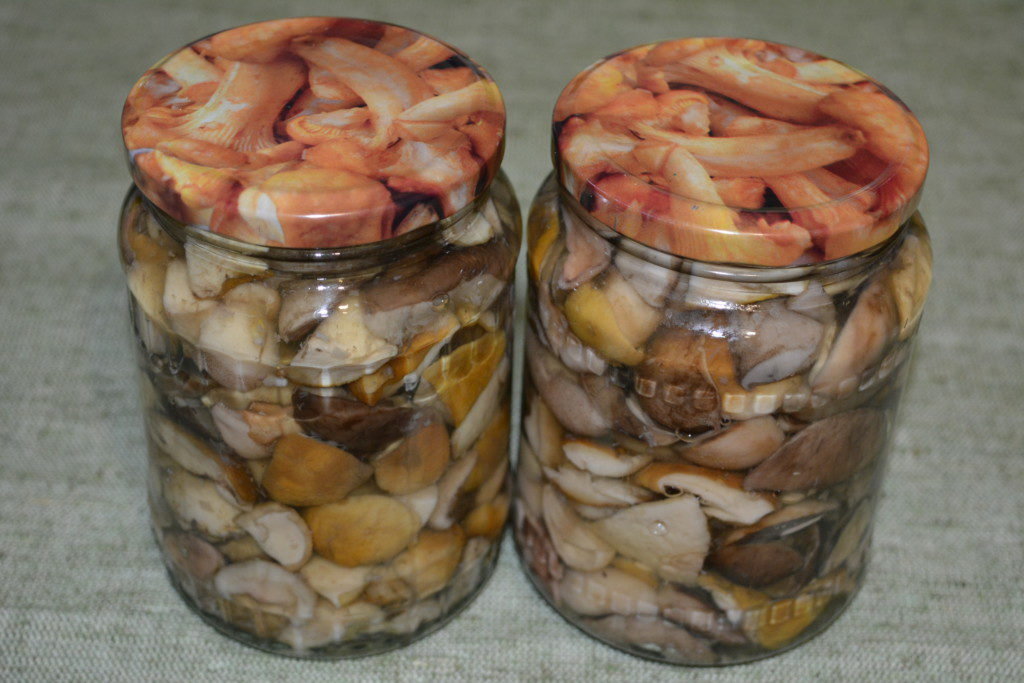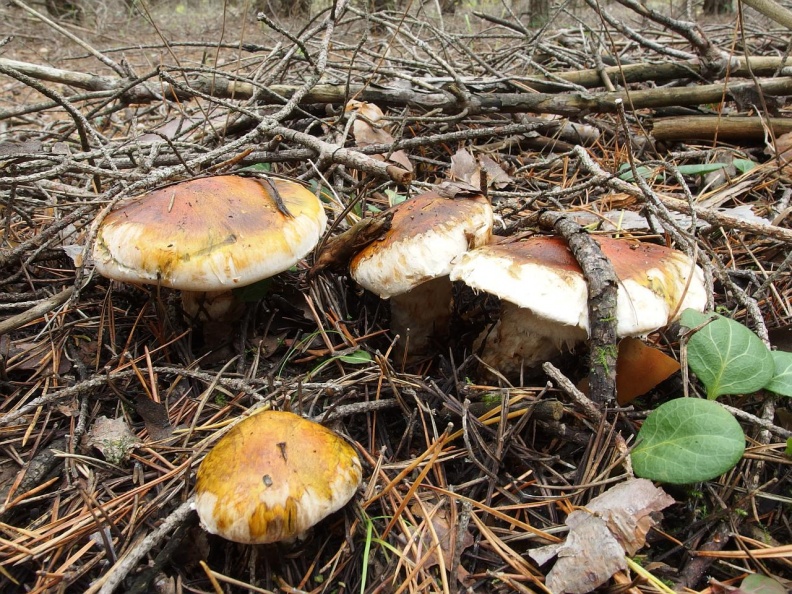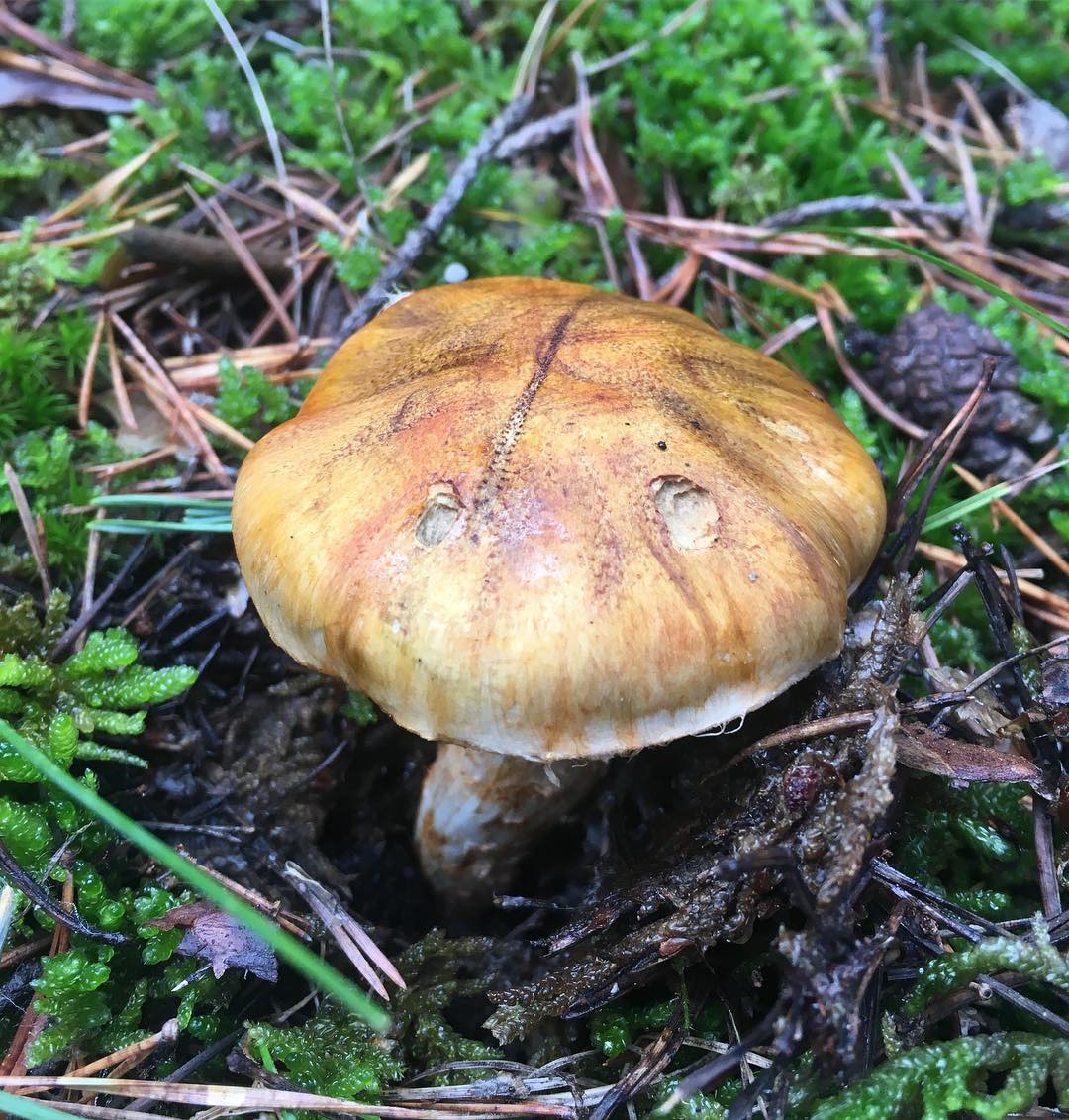Answers to common questions
The paths are often the topic of discussions for mushroom pickers. Below is a list of the most frequently asked questions about rows with answers to them:
Rowing, or tricholoma (Latin Tricholoma) is a genus of lamellar ground mushrooms of the Ryadovkovy family (Latin Tricholomataceae). Mushrooms of other genera of the family are often called "Ryadovki". (Lyophyllum, Lepista)
general description The genus includes lamellar mushrooms with colored, less often white, caps, which in young specimens are hemispherical and convex, later flat-spread, often with a wavy, curled or bent outward edge. The surface of the cap can be fibrous or scaly. The plates are adherent to the pedicle, often with a tooth, sometimes almost free. The leg is dense, central. There is no common blanket. Occasionally there is a filmy, rapidly disappearing private veil that remains on the leg in the form of a ring. Spores are smooth, colorless. The spore powder is white, rarely cream. Many species are distinguished by a flour, or a strong and unpleasant odor. In general, tricholas are characterized by variability of external signs, which makes it difficult to determine them in the field.
There are more than 2,500 species of mushrooms in the common family. Most of them are edible or conditionally edible, but some are also poisonous.
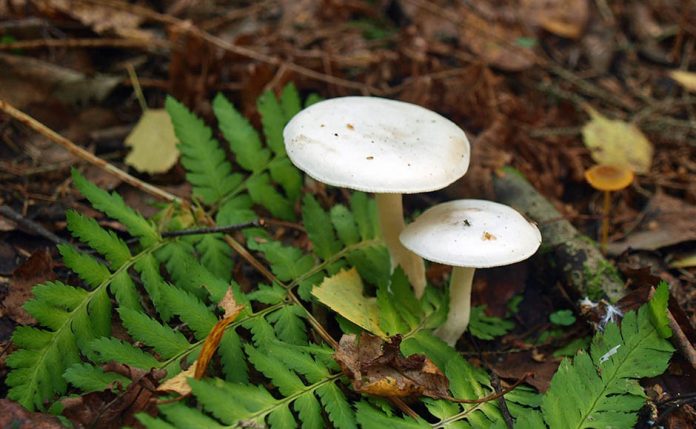
| Latin name: | Tricholoma |
| English name: | To be specified |
| Domain: | Eukaryotes |
| Kingdom: | Mushrooms |
| Department: | Basidiomycetes |
| Class: | Agaricomycetes |
| Order: | Agaric |
| Family: | Ordinary |
| Genus: | Rowing |
| Edibility | Edible mushroom |
Application and distribution of a row
 Application: applied fresh (after boiling), fried, salted and pickled. In addition, the tied row produces delicious mushroom caviar, as well as first courses.
Application: applied fresh (after boiling), fried, salted and pickled. In addition, the tied row produces delicious mushroom caviar, as well as first courses.
Distribution: grows in pine forests, preferring green mosses and sandy soils. Grows in small groups or singly from mid-August to mid-October. Some specimens can grow even after the first snows, but the weather does not allow them to ripen to the end for spores to appear. The fungus is widespread in the forests of Europe and North America. On our territory, it is less common, and in some regions it is even listed in the Red Book.
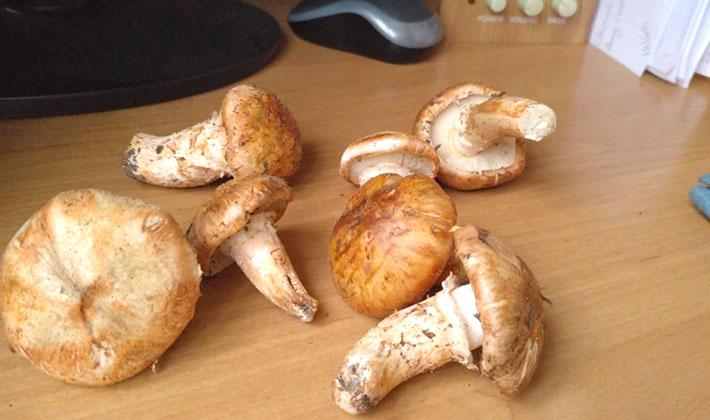 Those mushroom pickers who are familiar with the appearance and taste of the tied row (Tricholoma Focale) note that this is a very beautiful, strong fruit body. In addition, this representative has a juicy, dense pulp that does not wrinkle or crumble. Many people are impressed by the honeycomb ryadovka, because its structure perfectly tolerates both heat treatment and freezing. Thanks to this feature, the mushroom has a great advantage - unique crunchiness. Experienced lovers of "quiet hunting" note that it is better to use young and closed fruiting bodies. Sometimes the smell of ryadovka is not pleasant to all "fans" of mushroom dishes, but this is fixable - you can get rid of the specific aroma with the help of spices and herbs. Recall that during heat treatment, the broth from the mushrooms must be drained, since it acquires the smell of soda and a dark color, and is unlikely to cause an appetite. It is best to boil the row in 2 waters for 10 minutes for each run.
Those mushroom pickers who are familiar with the appearance and taste of the tied row (Tricholoma Focale) note that this is a very beautiful, strong fruit body. In addition, this representative has a juicy, dense pulp that does not wrinkle or crumble. Many people are impressed by the honeycomb ryadovka, because its structure perfectly tolerates both heat treatment and freezing. Thanks to this feature, the mushroom has a great advantage - unique crunchiness. Experienced lovers of "quiet hunting" note that it is better to use young and closed fruiting bodies. Sometimes the smell of ryadovka is not pleasant to all "fans" of mushroom dishes, but this is fixable - you can get rid of the specific aroma with the help of spices and herbs. Recall that during heat treatment, the broth from the mushrooms must be drained, since it acquires the smell of soda and a dark color, and is unlikely to cause an appetite. It is best to boil the row in 2 waters for 10 minutes for each run.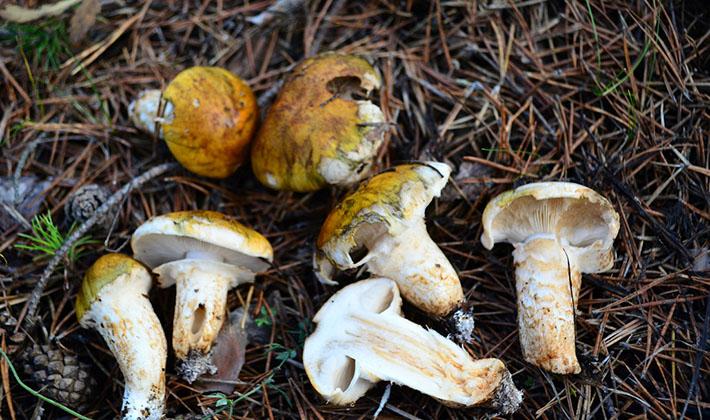
Mushroom ryadovka openkovidny or bandaged (tricholoma focale): photo and description, distribution and application
A row of honeydew-shaped or tied - a very rare lamellar representative of the mushroom "kingdom", which forms mycorrhiza with pine. It is classified as conditionally edible, which means that this fruit body can be eaten after thorough heat treatment.
We suggest that you familiarize yourself with the appearance of the honeycomb ryadka thanks to the photo and description.
Description of the row of crimson (bandaged)
Latin name: Tricholoma Focale.
Family: Ordinary.
Synonyms: bandaged ryadovka, skull. Latin synonyms: Armillaria zelleri, Tricholoma zelleri.
Hat: 5 to 10 cm in diameter, sometimes up to 12 cm.
Young specimens have a convex cap, but as they mature, it straightens out and becomes convex-outstretched, and then almost flat. Sometimes fibrous-scaly, the edges are often cracking, sometimes you can observe the remnants of a flocculent blanket on their surface.
The photo shows that the bandaged row has a reddish-brown, orange-red or brick-brown hat, the edges of which are lowered down.
Leg: long (from 4 to 10 cm) and thick (up to 3 cm in diameter), cylindrical, fusiform, sometimes narrowed at the base. At a young age, the structure is hard and dense, and at an old age it becomes hollow, longitudinally fibrous.
The leg of the row of the honeycomb is shown in the photo below:
Pulp: white, dense, firm, has a weak smell of fresh flour and slightly bitter taste, sometimes completely tasteless. As for the stalk of the mushroom ryadovka honeycomb, here the pulp is fibrous. Under the skin, the pulp has a slight reddish tint.
Blades: notched, frequent, partially adhered to the peduncle, white or slightly yellowish. In young specimens, the plates are completely hidden under a fibrous cover of a reddish-brown hue. With age, this veil breaks, leaving traces.
Spores: ovate or globular, white.
Edible: conditionally edible mushroom, but abroad it is classified as poisonous. Can be eaten only after preliminary heat treatment. After boiling for 30 minutes, the broth must be drained, without the possibility of further use.
Similarities and differences: it is almost impossible to confuse with any poisonous representative. The only species that looks like a bandaged row is the white-brown row (Tricholoma albobrunneum). The latter also grows in groups, preferring pines.
However, these species have noticeable differences: the white-brown row has a very strong bitterness and an unusual two-zone, even leg. Although there is information that this mushroom is boiled and then eaten.
A photo and description of the mushroom ryadovka honeydew will help to correctly distinguish it from inedible similar species.
Application and distribution of a row
Application: applied fresh (after boiling), fried, salted and pickled. In addition, the tied row produces delicious mushroom caviar, as well as first courses.
Distribution: grows in pine forests, preferring green mosses and sandy soils. Grows in small groups or singly from mid-August to mid-October.
Some specimens can grow even after the first snows, but the weather does not allow them to ripen to the end for spores to appear. The fungus is widespread in the forests of Europe and North America.
Those mushroom pickers who are familiar with the appearance and taste of the tied row (Tricholoma Focale) note that this is a very beautiful, strong fruit body. In addition, this representative has a juicy, dense pulp that does not wrinkle or crumble.
Many people are impressed by the honeycomb ryadovka, because its structure perfectly tolerates both heat treatment and freezing. Thanks to this feature, the mushroom has a great advantage - unique crunchiness. Experienced lovers of "quiet hunting" note that it is better to use young and closed fruiting bodies.
Sometimes the smell of ryadovka is not pleasant to all "fans" of mushroom dishes, but this is fixable - you can get rid of the specific aroma with the help of spices and herbs.
Loading…
Description of the row of crimson (bandaged)
Latin name: Tricholoma Focale.
Family: Ordinary.
Synonyms: bandaged ryadovka, skull. Latin synonyms: Armillaria zelleri, Tricholoma zelleri.
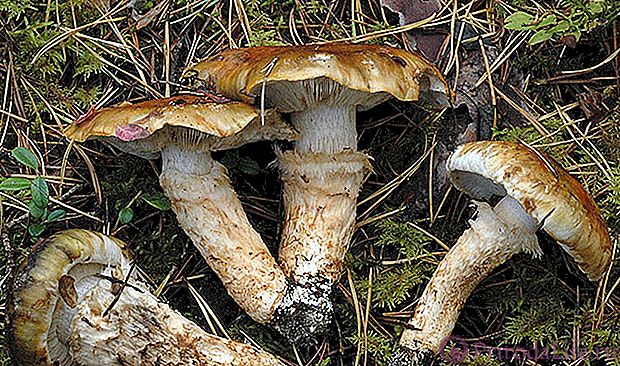


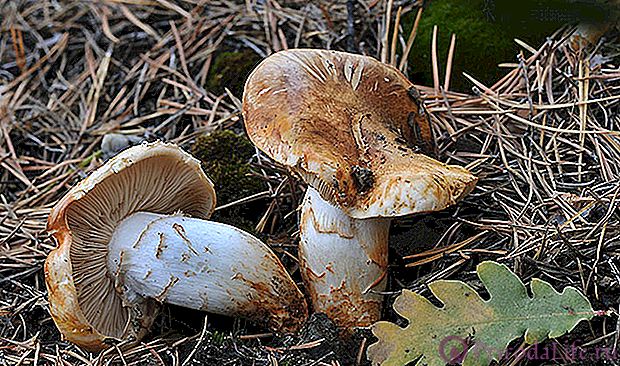 Hat: 5 to 10 cm in diameter, sometimes up to 12 cm. Young specimens have a convex cap, but as they mature, it straightens and becomes convex-outstretched, and then almost flat. Sometimes fibrous-scaly, the edges are often cracking, sometimes you can observe the remnants of a flocculent blanket on their surface. The photo shows that the bandaged row has a reddish-brown, orange-red or brick-brown hat, the edges of which are lowered down.
Hat: 5 to 10 cm in diameter, sometimes up to 12 cm. Young specimens have a convex cap, but as they mature, it straightens and becomes convex-outstretched, and then almost flat. Sometimes fibrous-scaly, the edges are often cracking, sometimes you can observe the remnants of a flocculent blanket on their surface. The photo shows that the bandaged row has a reddish-brown, orange-red or brick-brown hat, the edges of which are lowered down.
 Leg: long (from 4 to 10 cm) and thick (up to 3 cm in diameter), cylindrical, fusiform, sometimes narrowed at the base. At a young age, the structure is hard and dense, and at an old age it becomes hollow, longitudinally fibrous. There is also a ring-skirt on the leg, the surface above which is painted white, mealy. The lower part, extending from the ring to the very base, is the same color as the hat. Sometimes this area can be covered with small scales. The leg of the row of the honeycomb is shown in the photo below:
Leg: long (from 4 to 10 cm) and thick (up to 3 cm in diameter), cylindrical, fusiform, sometimes narrowed at the base. At a young age, the structure is hard and dense, and at an old age it becomes hollow, longitudinally fibrous. There is also a ring-skirt on the leg, the surface above which is painted white, mealy. The lower part, extending from the ring to the very base, is the same color as the hat. Sometimes this area can be covered with small scales. The leg of the row of the honeycomb is shown in the photo below:
Pulp: white, dense, firm, has a weak smell of fresh flour and slightly bitter taste, sometimes completely tasteless. As for the stalk of the mushroom ryadovka honeycomb, here the pulp is fibrous. Under the skin, the pulp has a slight reddish tint.
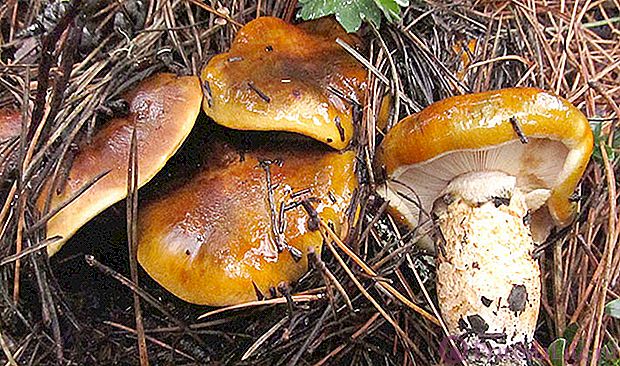 Blades: notched, frequent, partially adhered to the peduncle, white or slightly yellowish. In young specimens, the plates are completely hidden under a fibrous cover of a reddish-brown hue. With age, this veil breaks, leaving traces.
Blades: notched, frequent, partially adhered to the peduncle, white or slightly yellowish. In young specimens, the plates are completely hidden under a fibrous cover of a reddish-brown hue. With age, this veil breaks, leaving traces.
Spores: ovate or globular, white.
Edible: conditionally edible mushroom, but abroad it is classified as poisonous. Can be eaten only after preliminary heat treatment. After boiling for 30 minutes, the broth must be drained, without the possibility of further use.
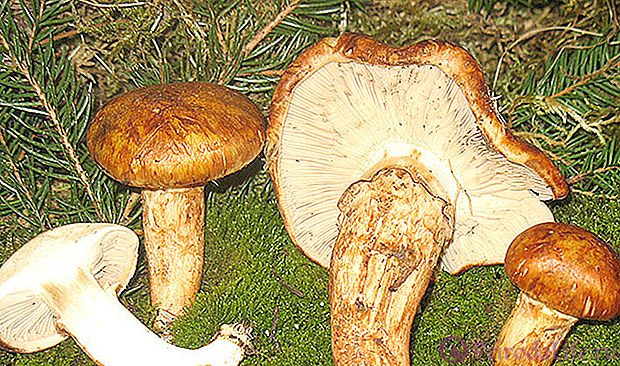 Similarities and differences: it is almost impossible to confuse with any poisonous representative. The only species that looks like a bandaged row is the white-brown row (Tricholoma albobrunneum). The latter also grows in groups, preferring pines. However, these species have noticeable differences: the white-brown row has a very strong bitterness and an unusual two-zone, even leg. Although there is information that this mushroom is boiled and then eaten. A photo and description of the mushroom ryadovka honeydew will help to correctly distinguish it from inedible similar species.
Similarities and differences: it is almost impossible to confuse with any poisonous representative. The only species that looks like a bandaged row is the white-brown row (Tricholoma albobrunneum). The latter also grows in groups, preferring pines. However, these species have noticeable differences: the white-brown row has a very strong bitterness and an unusual two-zone, even leg. Although there is information that this mushroom is boiled and then eaten. A photo and description of the mushroom ryadovka honeydew will help to correctly distinguish it from inedible similar species.
Definitioner
- Basidia (Basidia)
-
Lat. Basidia. A specialized structure of sexual reproduction in fungi, inherent only in Basidiomycetes. Basidia are terminal (end) elements of hyphae of various shapes and sizes, on which spores develop exogenously (outside).
Basidia are diverse in structure and method of attachment to hyphae.
According to the position relative to the axis of the hypha, to which they are attached, three types of basidia are distinguished:
Apical basidia are formed from the terminal cell of the hypha and are located parallel to its axis.
Pleurobasidia are formed from lateral processes and are located perpendicular to the axis of the hypha, which continues to grow and can form new processes with basidia.
Subasidia are formed from a lateral process, turned perpendicular to the axis of the hypha, which, after the formation of one basidium, stops its growth.
Based on morphology:
Holobasidia - unicellular basidia, not divided by septa (see Fig. A, D.).
Phragmobasidia are divided by transverse or vertical septa, usually into four cells (see Fig. B, C).
By type of development:
Heterobasidia consists of two parts - hypobasidia and epibasidia developing from it, with or without partitions (see Fig. C, B) (see Fig. D).
Homobasidia is not divided into hypo- and epibasidia and in all cases is considered holobasidia (Fig. A).
Basidia is the place of karyogamy, meiosis and the formation of basidiospores. Homobasidia, as a rule, is not functionally divided, and meiosis follows karyogamy in it.However, basidia can be divided into probasidia - the site of karyogamy and metabasidia - the site of meiosis. Probasidium is often a dormant spore, for example in rust fungi. In such cases, probazidia grows with metabasidia, in which meiosis occurs and on which basidiospores are formed (see Fig. E).
See Karyogamy, Meiosis, Gifa.
- Pileipellis
-
Lat. Pileipellis, skin - differentiated surface layer of the cap of agaricoid basidiomycetes. The structure of the skin in most cases differs from the inner flesh of the cap and may have a different structure. The structural features of pileipellis are often used as diagnostic features in descriptions of fungi species.
According to their structure, they are divided into four main types: cutis, trichoderma, hymeniderma and epithelium.
See Agaricoid fungi, Basidiomycete, Cutis, Trichoderma, Gimeniderm, Epithelium.
- Trichoderma (Trichoderma)
-
The type of cap skin, usually consists of straight, septate elements located more or less perpendicular to the surface and laid both at the same and at different levels; the ends of the hyphae can be morphologically modified and represent dermatocystids. The surface of the cap is velvety to almost felt.
Lat. Trichoderm.
Trichoderma, in turn, is subdivided into intertwined trichoderma and irregular trichoderma.
Intertwined trichoderm (Intricate trichoderm) - trichoderm, consisting of intertwined hyphae, located not parallel to each other and forming a tomentose pubescence.
Irregular trichoderm - Trichoderma, consisting of irregularly branching hyphae.
See Dermatotsistida, Hypha, Septa.
- Cutis
-
The type of cap skin, consists of creeping non-gelatinized hyphae located parallel to the surface. The surface of the cap looks smooth.
Lat. Cutis.
See Gifa.
Description and photos of purple row mushrooms:
Row purple (Lepista nuda)
Synonyms: naked lepist, titmouse, cyanosis.
It is noteworthy that about a month before the beginning of fruiting, the purple ryadovka mycelium emerges on the surface of the forest litter. So to speak, it carries out reconnaissance in force. At first, the mycelium is almost white, pale bluish, but rather quickly turns into a light purple color characteristic of the fungus itself. Having found such a purple "cotton wool" enveloped in rotten needles and leaves, you can confidently take a note of the cherished place and come here in season for a guaranteed harvest.
The blues owe their pleasant fruity sweetish taste to the sugar trehalose, which is also found in meadow mushrooms. Cultivated in a number of countries.
Description of the purple row:
One of the most popular and most delicious late autumn rows. The cap is 4-20 cm in diameter, flat-convex, with a thin curved edge, naked, smooth, watery, moist, thick-fleshed. The color of the cap is necessarily with a significant proportion of violet: bright, dark or purple-violet, sometimes with an admixture of brown, in the center - brown-violet. Plates are frequent, purple, later light purple to pale lilac.
The pulp is thick, dense, bright purple, with age it fades like a cap or even stronger, the taste and smell are pleasant. Stem 3-10 x 0.7-3 cm, dense, cylindrical, slightly thickened below, covered with purple-brown felt mycelium at the base, purple at an early age, later lightening, whitish-mealy under the cap, sometimes hollow with age.
It is found throughout the temperate forest zone of Russia, in forests on soil and forest litter. Autumn mushroom, bears fruit in large groups from early September to late November (with peaks after the first cold in September and early October), often everywhere.
Healing properties of purple ryadovka:
The mushroom is high in vitamin B, stearic acid and ergosterol.
The extract of the cultural mycelium of this talker has anticancer properties and inhibits the growth of sarcoma-180 by 90% in laboratory animals, and Ehrlich's carcinoma by 100%.It has a strong cytotoxic effect on human cells of the L-1210 tumor line; in culture, it can inhibit the development of MCF-7 breast cancer and Walker 256 sarcoma.
The antibacterial action targets both gram-positive and gram-negative bacteria. The growth of E. coli, Staphylococcus aureus, Streptococcus pyogenes and Streptococcus enteretidis is inhibited. Antifungal activity was also found (suppresses Candida albicans).
Contains vitamin B, effective against beriberi disease, lowers blood glucose levels. Currently, on the basis of purple ryadovka, a dietary drug is being developed to control hypoglycemia.
In addition, ryadovka violet has anti-inflammatory and immunomodulatory activity, promotes platelet aggregation and increases the body's resistance to the influenza virus.
In Chinese medicine, regular consumption of food is believed to help maintain the nervous system. It is also used to regulate sugar metabolism, treat spleen, rheumatism and dermatophytosis of the legs.
It is not assembled for medicinal purposes in Russia.
Cooking Uses:
Edible and tasty mushroom, does not require (from our point of view) preliminary boiling. It is used for preparing first and second courses, snacks, salads, fillings.
Information about the allergenicity or toxicity of the violet row, which appeared at different times from different authors, has now been refuted by a number of studies. However, you should be aware that bruises are one of the most active bioaccumulators of anthropogenic pollution (ranked third after May mushroom and pigs), primarily heavy metals (tin, copper, mercury, cadmium). Therefore, you should avoid collecting them in city parks and in forests near industrial sites.
Growing a row at home

The ryadovka fruit body is formed at ambient temperatures below 15 ° C, in autumn, winter and spring. The best time to start growing these mushrooms is in May. In the garden, rows are grown in beds, in boxes or bags, located in the shade of trees and shrubs.
The substrate is planted in soil, covered and high humidity is provided. At a temperature of about 20 ° C, after 2-3 weeks, a purple mycelium is formed, on which 5 cm of moist soil is applied. After another 2-3 weeks, the mycelium appears on the surface of the earth. You do not need to rake it. At a temperature of 10-15 ° C, the first mushrooms germinate, after which the cover is removed, and the mushrooms appear in waves, and then continuously. A row is assembled by twisting the mushroom out of the soil when its cap takes a horizontal position.
The cover layer should be kept at optimum moisture and another layer of earth is added after each crop wave. At temperatures below 5 ° C in autumn, the beds are covered with bags and a layer of foliage or straw 10 cm high.When the temperature is above 10 ° C in spring, the cover is removed and a thin layer of earth is applied on top.
After 3-4 months of cultivation, the substrate is depleted.
In rooms with a constant temperature of 10-15 ° C, good lighting and an influx of fresh air, the row is bred in boxes and in bags using the same methods as in the beds.
Description of the gigantic ryadovka
The fruiting body of the ryadovka-colossus is hat-peg. The mushroom, as its name implies, is large in size. The shape of the cap is initially semicircular with tucked edges, but over time it becomes flat-convex, and then comes to open. In mature specimens, the edges of the cap rise up and become wavy.
The cap diameter of this large mushroom is 8 to 20 centimeters. Thin fibers are visible on the surface of the cap. The hat is smooth to the touch. Its color is reddish brown, brown or reddish. The edges of the cap are slightly lighter in comparison to the middle.
The leg, in accordance with the cap, is also very large, dense, fleshy, cylindrical in shape. The length of the leg is 5-10 centimeters, while the diameter reaches 2-6 centimeters. At the base, the leg becomes thicker, and its shape becomes tuberous. There is a ring on the leg.The upper part of the stem is mostly whitish, its central part is yellowish or reddish-brown, and the lower part is the same as the cap - reddish-brown.
There is a lamellar hymenophore under the cap. The plates are wide, they are often located, their color is cream, sometimes it can be pale pink. In mature mushrooms, the plates become darker - reddish-brown in color.
The mushroom pulp is very firm. The color of the pulp is white. When cut, the flesh may turn yellowish or reddish. The taste of the pulp is bitter, reminiscent of an unripe walnut, and the smell is pleasant. Spores are smooth, oval, pear-shaped, colorless. Spores form a white spore powder.
Spreading a giant row
This is a rare variety of mushrooms, but at the same time they have a fairly wide range. Within the area of \ u200b \ u200bthe range, gigantic ryadovka are found in small groups. On the territory of our country, rowing colossus grow in the Kirov, Leningrad regions, as well as in the Krasnodar Territory. They can be found in some European countries, North Africa and Japan.
Giant rows are found mainly in pine forests, form mycorrhiza with pines. They can also be found in mixed forests. They bear fruit from August to September.
The edibility of the colossus ryadovka and the number of these mushrooms
These are edible mushrooms, but they are quite rare, so it is not recommended to collect them. In addition, in some regions of Europe and our country, they are listed in the Red Book.
These rows are not cultivated. They are listed in the Red Book of the Kirov, Leningrad regions and St. Petersburg.
Other mushrooms of this genus
• Row yellow-brown - conditionally edible mushroom. Rows are yellow-brown infrequently. They grow in deciduous forests. They settle on larch stumps. Fruiting in July-September. They are found in groups of 3-4 specimens;
• White ryadovka is an inedible mushroom. They grow in large groups in dense forests, groves and parks. In appearance, the white ryadovka is similar to champignon, but it has a pungent taste and a pungent odor, which is its distinctive feature;
• Purple row - conditionally edible mushroom. These rows grow in northern coniferous and mixed forests. They settle in groups, they are found quite often. They often settle next to smoky talkers. Fruiting from September to November;
• Tied row - conditionally edible mushroom. Rowing grows tied in pine forests. Fruiting occurs from August to October. They meet singly or in small groups. Prefers mosses and sandy soils.
Growing a row at home

The ryadovka fruit body is formed at ambient temperatures below 15 ° C, in autumn, winter and spring. The best time to start growing these mushrooms is in May. In the garden, rows are grown in beds, in boxes or bags, located in the shade of trees and shrubs.
The substrate is planted in soil, covered and high humidity is provided. At a temperature of about 20 ° C, after 2-3 weeks, a purple mycelium is formed, on which 5 cm of moist soil is applied. After another 2-3 weeks, the mycelium appears on the surface of the earth. You do not need to rake it. At a temperature of 10-15 ° C, the first mushrooms germinate, after which the cover is removed, and the mushrooms appear in waves, and then continuously. A row is assembled by twisting the mushroom out of the soil when its cap takes a horizontal position.
The cover layer should be kept at optimum moisture and another layer of earth is added after each crop wave. At temperatures below 5 ° C in autumn, the beds are covered with bags and a layer of foliage or straw 10 cm high.When the temperature is above 10 ° C in spring, the cover is removed and a thin layer of earth is applied on top.
After 3-4 months of cultivation, the substrate is depleted.
In rooms with a constant temperature of 10-15 ° C, good lighting and an influx of fresh air, the row is bred in boxes and in bags using the same methods as in the beds.

